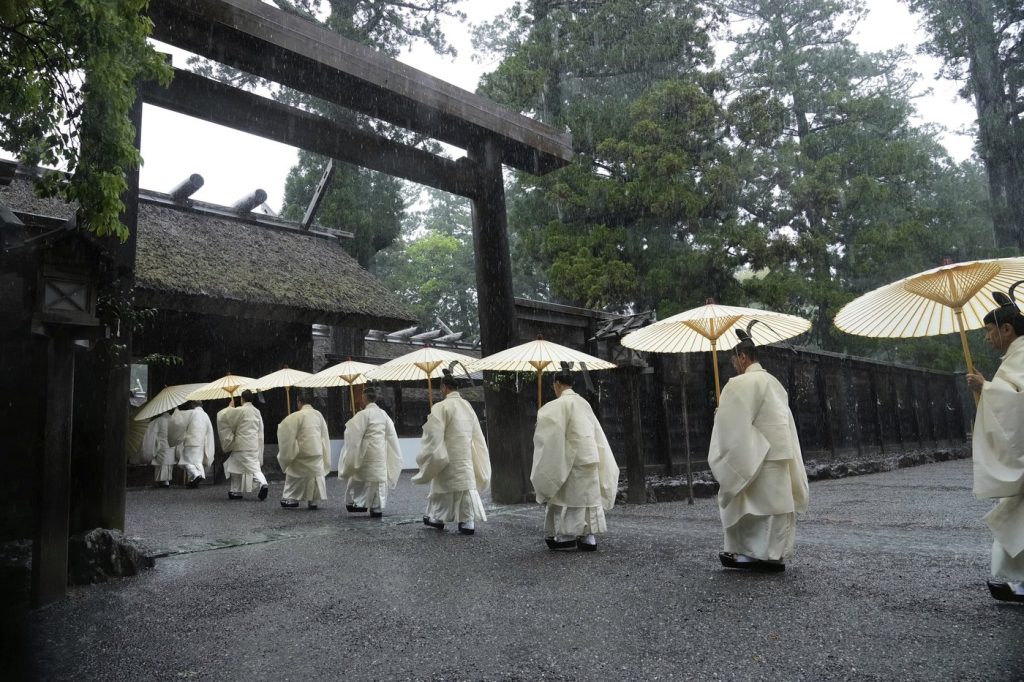ISE, Japan (AP) — Every 20 years for the past 1,300 years, Ise Jingu, Japan's most revered Shinto shrine, undergoes a meticulous process of demolition and reconstruction. This massive undertaking, valued at approximately $390 million, typically lasts around nine years and requires the exceptional skills of the nation's finest carpenters, woodcutters, builders, and artisans. Each detail of the structures is crafted with dedication, knowing they are destined to be dismantled shortly after completion.
The current reconstruction marks the 63rd cycle, which first began in 690 during the reign of Empress Jito, as noted by Noboru Okada, a professor emeritus at Kogakkan University specializing in Japanese history and archaeology. A total of 125 shrine buildings will be rebuilt, along with over 1,500 garments and other ritual objects essential for the shrine's traditions. This intricate process features 33 accompanying festivals and ceremonies, culminating in a significant ritual in 2033, which will see the presiding deity transferred to the newly constructed shrine.
Ise's inner shrine pays homage to the sun goddess Amaterasu, who has resided there for two millennia in Mie Prefecture, alongside the banks of the Isuzu River. Miori Inata, an author and photographer who has documented Ise’s reconstruction over a decade, proposes several theories regarding the cyclical rebuilding. One theory connects the 20-year cycle to the shelf life of stored rice, while another relates it to the phases of a human lifespan—from birth to adulthood, adulthood to middle age, and middle age to death.
The rebuilding rituals underscore a profound relationship between religion and nature. The process commences with priests in starched robes who beat drums and march to the inner shrines for prayer. According to historian Okada, “The world where we live and the mountain realm are separate, distinct worlds,” emphasizing the need for permission from mountain deities before cutting trees or gathering plants.
Celebrations attract thousands, contributing to the approximately 7 million pilgrims who visit the shrine annually. Shintoism—a faith deeply rooted in animism—is centered around the concept of "kami," or spirits, that inhabit the world. First-time viewer Yuto Nakase reflected, “You can count with one hand the number of times you’ll witness something like this in your lifetime, so I really felt it was a rare and precious sight.”
At night, priests gather with lanterns and proceed to the mountains for a secret purification rite, preparing a sacred pillar to be placed beneath the main sanctuary's floor. Many visitors express a sense of profound mystery at Ise, with local sake shop owner Yoriko Maeda describing a transformational feeling upon crossing a bridge into the shrine grounds, noting a noticeable change in her breathing and a release of stress linked to the ambiance of nature.
The rebuilding effort places immense significance on every detail of the shrine. Woodcutters in the forests of Nagano Prefecture carefully insert the tip of a freshly cut tree into the stump of another, praying together in reverence. Soju Ikeda, a local lumber company operator, explains that this act honors the continuity of life within a tree and reflects a prayer for forest regeneration. Such practices reinforce an appreciation for living trees, which are often pivotal to the structure's construction.
In the following days, numerous men, donning traditional attire, transport two-ton logs across the Isuzu River, chanting rhythmically as they wade through the water. Local musicians sing traditional songs while they carry logs on carts through the narrow streets of Ise, creating a deeply communal atmosphere. Cypress groves are specially cultivated for Ise's ongoing construction, with care for these trees often surpassing individual human lifespans, passing responsibilities through generations.
Okada emphasizes that the rebuilding process transcends mere structural reconstruction. Every element—from the wood to the thatch—is integrated with nature, allowing both nature and the people involved to grow together. This approach reflects a reverence for the natural world and the spiritual significance of the Ise Jingu shrine.










